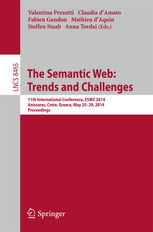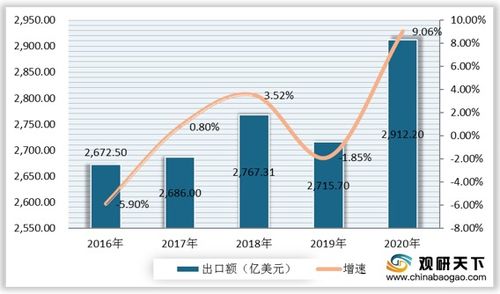The Global Trends and Challenges of Textile Exports in Guangdong,China
Guangdong, China, is a leading textile exporting region in the world. In recent years, the global market demand for textile products has been increasing, and Guangdong's textile industry has achieved significant development. However, there are still many challenges facing the industry. Firstly, the competition between domestic and foreign textile products is becoming increasingly fierce. Secondly, the cost of raw materials and labor continues to rise, which affects the price competitiveness of textile products. Thirdly, the environmental protection requirements of international trade have become more stringent, requiring Guangdong's textile enterprises to improve their environmental management levels. Finally, the impact of international trade policies on the textile industry is also an important factor that needs to be considered.
Introduction: Textile exports have been a significant part of the global economy for decades. In recent years, especially during the COVID-19 pandemic, the textile industry has faced unprecedented challenges and opportunities. This paper aims to analyze the current state of textile exports in Guangdong, China, highlighting its strengths and addressing its weaknesses, as well as exploring potential future directions.

Strengths of Guangdong Textile Exports:
- Product Diversity: Guangdong is known for its diverse range of textile products, including clothing, home textiles, and industrial fabrics. These products cater to a wide range of consumer preferences and market demands.
- High-Quality Manufacturing: Guangdong's textile industry places a strong emphasis on quality control and innovation. Many local manufacturers have achieved high standards in terms of product quality and design, which has helped them gain a competitive edge in international markets.
- Government Support: The Chinese government has implemented various policies to support the development of the textile industry, including tax incentives, subsidies, and training programs. These measures have contributed to the growth of the industry and its export capabilities.
Weaknesses of Guangdong Textile Exports:
- Competition from Low-Cost Countries: With the rise of emerging economies like Bangladesh and Vietnam, there is increased competition in the global textile market. These countries offer lower labor costs and faster production times, making it difficult for Guangdong's textile companies to maintain their pricing power.
- Environmental Concerns: The textile industry is often criticized for its negative impact on the environment, such as water pollution and air pollution. As consumers become more environmentally conscious, this concern may limit the growth of the industry.
- Trade Barriers: International trade agreements and tariffs can create barriers to trade, which can affect the profitability of exporting textile products. Additionally, changes in import regulations can impact the supply chain and pricing of textile goods.
Potential Future Directions for Guangdong Textile Exports:
- Innovation and Technology: To stay competitive in the global market, Guangdong's textile companies need to focus on innovation and technology. By investing in research and development, they can develop new products and improve production efficiency.
- Sustainable Development: Emphasizing sustainable practices in the textile industry can help reduce its environmental impact and appeal to green-conscious consumers. This could lead to greater demand for eco-friendly textiles and potentially increase export opportunities.
- Cross-Border Cooperation: Collaborating with other countries and regions can expand the market reach of Guangdong's textile products. By establishing partnerships or joint ventures, companies can access new markets and gain insights into different cultural preferences and production methods.
Conclusion: Guangdong's textile exports are an integral part of the global economy, but they also face numerous challenges. To remain competitive and grow sustainably, the industry must focus on innovation, sustainability, and international cooperation. By doing so, Guangdong can continue to contribute significantly to the world's textile industry while maintaining its position as a leading exporter.

广东作为中国重要的纺织品出口基地,近年来在纺织品出口领域取得了显著成绩,本文旨在通过深入分析广东纺织品出口的现状、策略以及市场趋势,为相关企业和政策制定者提供参考。
广东纺织品出口现状分析
- 出口规模与增长 近年来,广东纺织品出口规模持续扩大,增长率较高,数据显示,广东纺织品出口额逐年攀升,特别是在服装、家纺等领域表现尤为突出。
- 出口市场结构 广东纺织品出口主要面向欧美等发达国家和地区,同时也在东南亚、非洲等地区形成了一定的市场布局,不同地区的市场需求和特点各异,需要针对性地进行出口策略调整。
- 贸易伙伴关系与合作 广东与多个国家和地区建立了稳定的贸易合作关系,通过互利共赢的方式促进了纺织品出口的增长,广东还积极推动与国外先进纺织企业的合作,提升自身技术水平。
广东纺织品出口策略分析
- 产品创新与品质提升 为了适应国内外市场需求,广东纺织品出口企业需要不断进行产品创新和品质提升,通过研发新产品、优化生产工艺、提高产品质量等方式,提高产品的竞争力。
- 绿色贸易战略 随着环保意识的提高,绿色贸易战略成为广东纺织品出口的重要方向,企业需要加强环保意识,采用环保材料和生产工艺,降低产品对环境的影响。
- 跨境电商平台建设 随着互联网技术的发展,跨境电商成为广东纺织品出口的新趋势,企业需要加强跨境电商平台的建设,提高线上销售渠道的覆盖面和效率。
广东纺织品出口市场趋势分析
- 国内外市场需求变化 国内外市场需求的变化是影响广东纺织品出口的重要因素,随着消费者需求的不断升级,对纺织品的质量、款式、功能等方面提出了更高的要求。
- 国际贸易环境变化 国际贸易环境的变化也对广东纺织品出口产生了影响,全球经济形势的不确定性、贸易保护主义抬头等因素都对纺织品出口带来了挑战。
- 新兴市场的发展趋势 新兴市场的发展趋势也对广东纺织品出口带来了新的机遇,东南亚、非洲等地区的劳动力成本逐渐降低,为纺织品出口提供了新的市场空间。
案例说明:广东纺织品出口的成功经验

以某知名纺织品出口企业为例,该企业在纺织品出口方面取得了显著成绩,该企业在产品创新、品质提升、跨境电商平台建设等方面进行了积极的尝试和探索,具体做法包括:加强技术研发和创新,提高产品质量和附加值;积极拓展国际市场,特别是欧美等发达国家和地区;加强与国外先进纺织企业的合作,提升自身技术水平;该企业还积极推进绿色贸易战略,降低产品对环境的影响,通过这些措施的实施,该企业在纺织品出口方面取得了良好的业绩和口碑。
广东作为中国重要的纺织品出口基地,在纺织品出口领域取得了显著成绩,为了更好地适应国内外市场需求和国际贸易环境的变化,广东纺织品出口企业需要加强产品创新和品质提升、绿色贸易战略、跨境电商平台建设等方面的努力,还需要加强与国外先进纺织企业的合作,提升自身技术水平,才能更好地促进广东纺织品出口的发展,实现可持续发展。
Articles related to the knowledge points of this article:
The Story of Xu Chunfeng Textile Factory
The Unique World of Taiyuan Needlecraft Textiles


